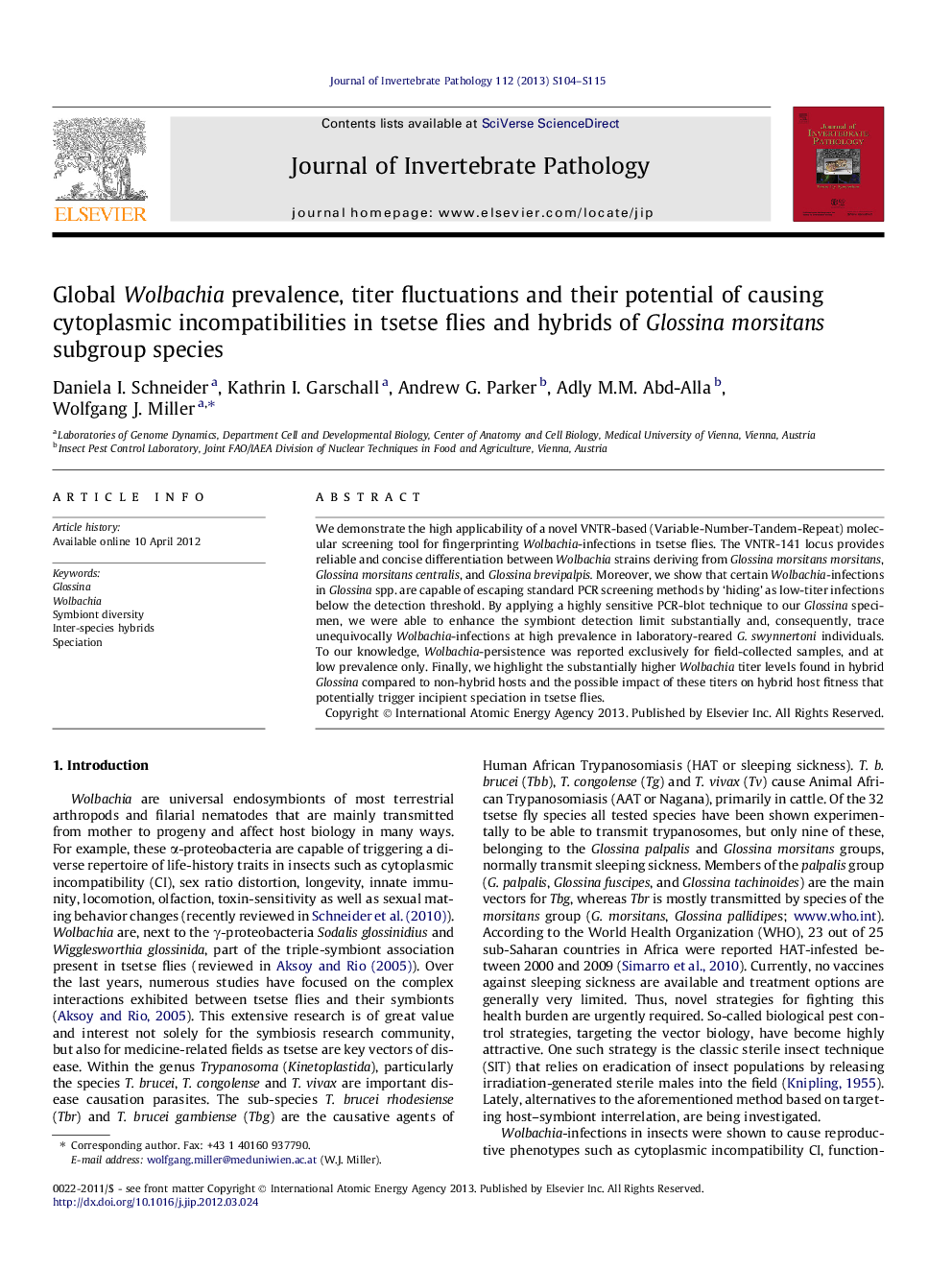| Article ID | Journal | Published Year | Pages | File Type |
|---|---|---|---|---|
| 6389618 | Journal of Invertebrate Pathology | 2013 | 12 Pages |
We demonstrate the high applicability of a novel VNTR-based (Variable-Number-Tandem-Repeat) molecular screening tool for fingerprinting Wolbachia-infections in tsetse flies. The VNTR-141 locus provides reliable and concise differentiation between Wolbachia strains deriving from Glossina morsitans morsitans, Glossina morsitans centralis, and Glossina brevipalpis. Moreover, we show that certain Wolbachia-infections in Glossina spp. are capable of escaping standard PCR screening methods by 'hiding' as low-titer infections below the detection threshold. By applying a highly sensitive PCR-blot technique to our Glossina specimen, we were able to enhance the symbiont detection limit substantially and, consequently, trace unequivocally Wolbachia-infections at high prevalence in laboratory-reared G. swynnertoni individuals. To our knowledge, Wolbachia-persistence was reported exclusively for field-collected samples, and at low prevalence only. Finally, we highlight the substantially higher Wolbachia titer levels found in hybrid Glossina compared to non-hybrid hosts and the possible impact of these titers on hybrid host fitness that potentially trigger incipient speciation in tsetse flies.
Graphical abstractDownload full-size imageHighlights⺠VNTRs are highly diagnostic tools for fingerprinting Wolbachia in tsetse flies. ⺠Multiple infections, free and nuclear insertions into host chromosomes, do exist. ⺠Some infections can escape detection via hiding as low-titer infections. ⺠In hybrids Wolbachia can transform into pathogens by loss of replication control.
